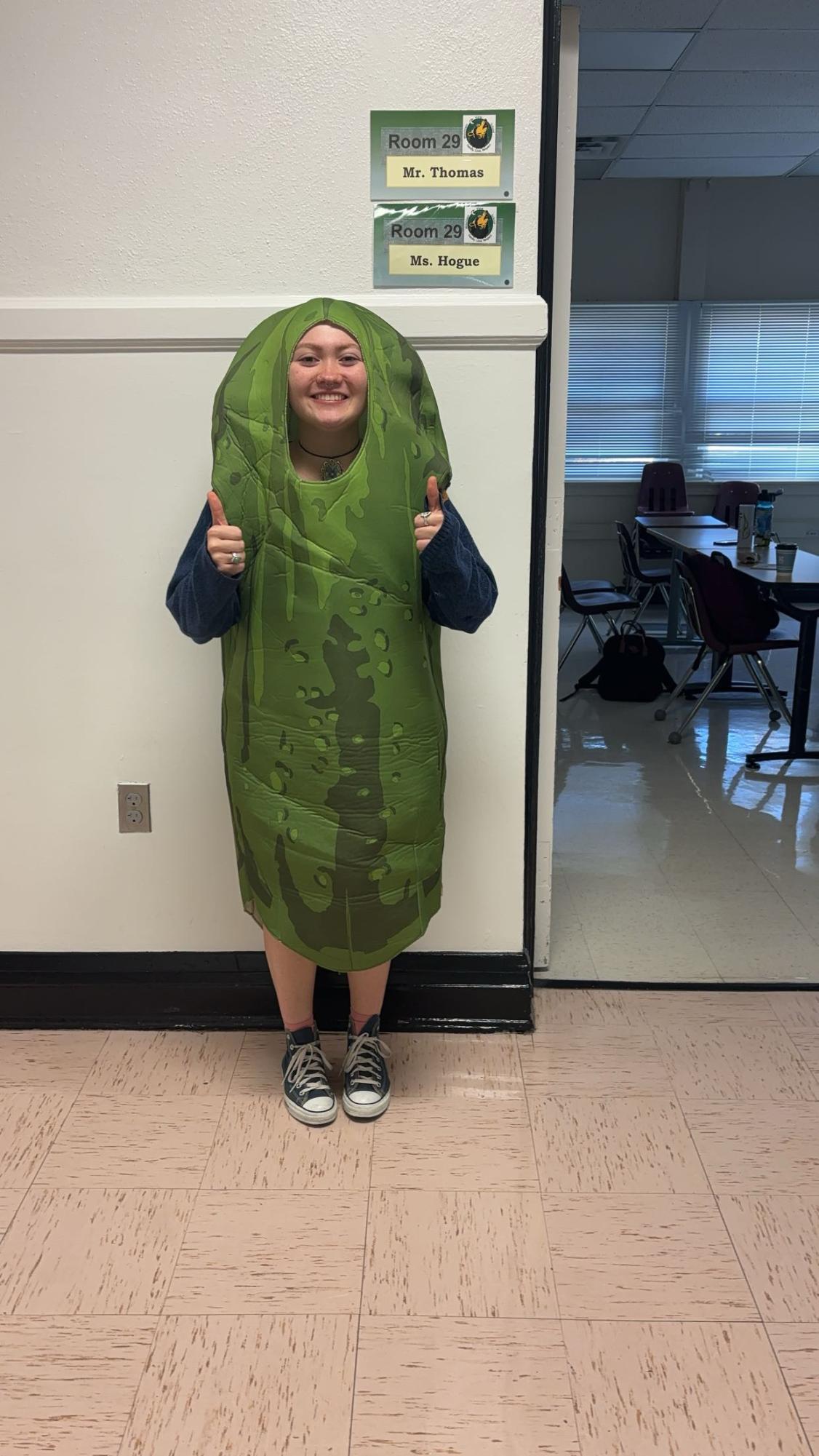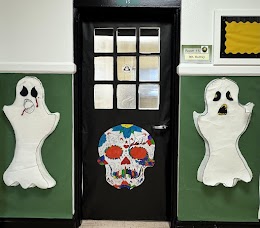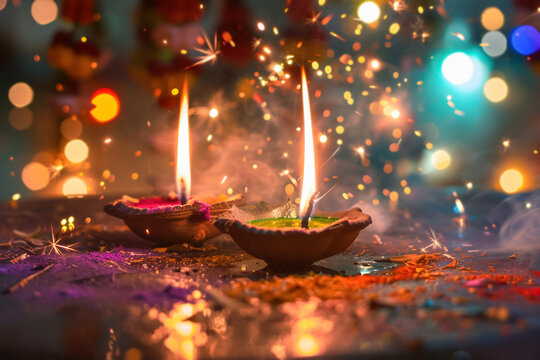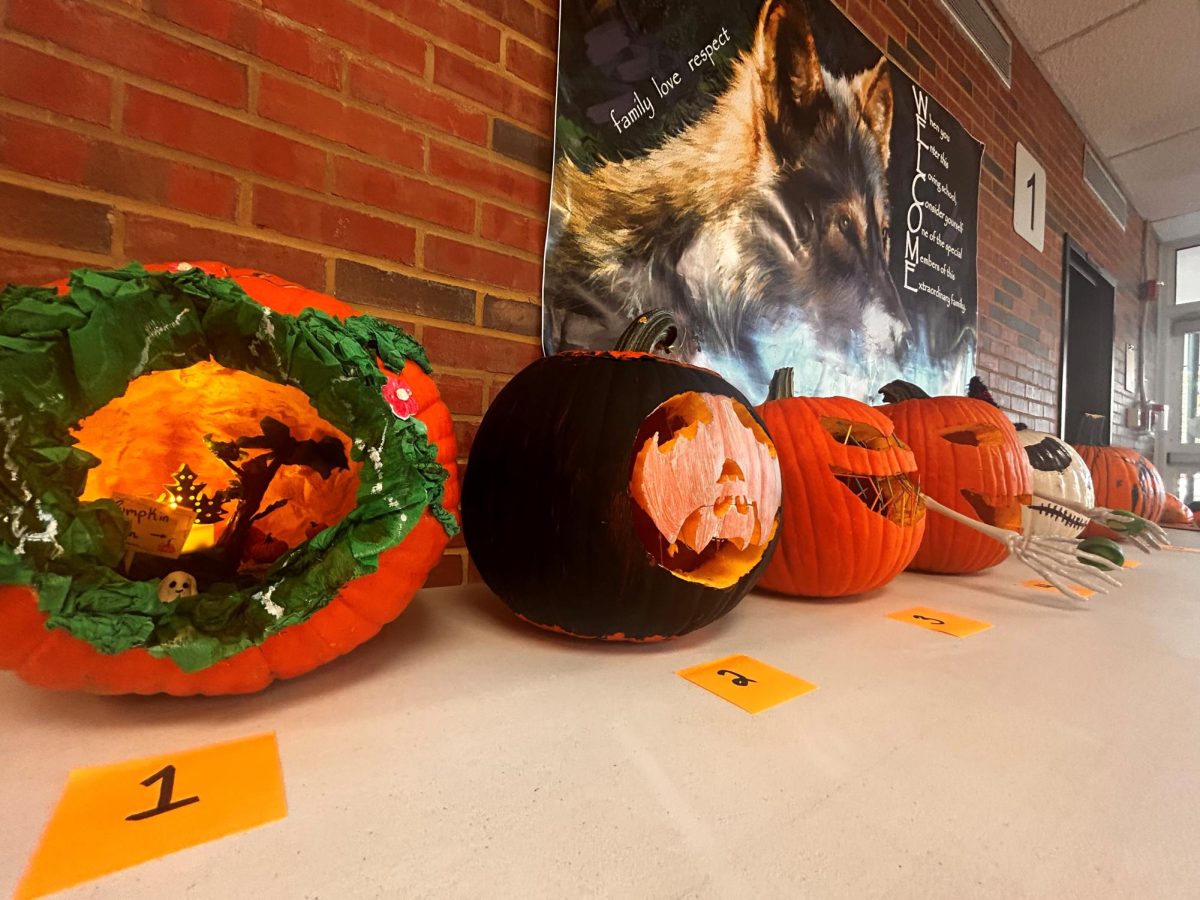October is a time to remember our family culture. The Mountain View Family celebrates our first mentor social of the year on October 31st. As we end the first quarter on Halloween and Diwali, we enter into a three day period of cultural remembrance and celebration. We are taking time this week to reflect on our cultural perspectives.

How does Mt. View celebrate Halloween?

Our students have taken time to decorate the classroom doors and some have carved pumpkins. The celebration of common traditions helps build a shared culture. Students and teachers like to come to school dressed up as a character or even representing a certain theme. Some came dressed as the scary emotions we too often feel while others came to brighten the mood as a cheery pickle or a very realistic football coach. Some characters came right out of the mid 20th century to recognize the color Green for environmental learning and advocacy as we approach the middle of the post industrial age of globalization in the mid 21st century. Always with a traditional witch flying past the moon, an ocasional cat and mouse and a man at work directing the flow of traffic as we remain constantly under construction. Halloween at Mt. View is an opportunity for Family bonding and the showcasing of our creative thinking.

The Cultural Mix of Halloween
Human culture has long been fascinated by the edges of life and death; the cycles of light and darkness. The Celts of the Northwest Islands of Europe celebrated the end of the harvest and the beginning of the dark days of winter with ” an ancient Celtic festival of Samhain (pronounced sow-in). The Celts, who lived 2,000 years ago, mostly in the area that is now Ireland, the United Kingdom and northern France, celebrated their new year on November 1.” This was a time where the boundaries of spirit and flesh mixed. In this ancient all of nature represented spiritual mystery and was understood through the telling of folk stories handed down from generation to generation. Traditional fires were lit to pierce the darkness and bring hope in the long cold winter ahead. Even now people in suburban America enjoy sitting by a fire pit as they welcome the characters off the streets for “trick or treating”.
https://www.history.com/topics/halloween/history-of-halloween#ancie
The Roman empire reached the frontier of Celtic lands eventually bringing with it the influence of Roman Christianity. In Catholic Christian culture there are three days dedicated to a remembrance of the dead. The time period of this festival was chosen knowing the meaning it already had for non-Christians whom they sought to convert. October 31st is known as “All Hallows Eve” or Halloween. In Europe there formed a tradition of children in the streets singing prayers for the dead that has evolved into “trick or treating” in America today. November 1st is “All Saints Day” when Christians recognize good souls united with God. The Catholic tradition has named Saints as examples of goodness and virtue throughout history. November 2 is “All Souls Day” when Christians pray for all those who have died.
“The creatures of Halloween”
Many different mythical creatures are associated with Halloween, we often see them in the form of spooky stories, costumes, decorations, and various traditions. Vampires, fairies, werewolves, and more are all things we are familiar with, yet despite this familiarity many seem to be unaware of the origins of many of these creatures. Halloween typically derives from a multitude of different cultures, these mythical beings have become a center-piece of Halloween culture itself. This constantly evolving culture allows for light to be shed on the diverse traditions of others holidays. That being said, it is important to dive into the origins of the various creatures associated with Halloween, and how they came to be what we view them as today. Speaking of today, we noticed Beetlejuice has been resurrected and was seen walking the halls of Mt. View. This is a modern day creature who mingles the dead and the living. The original movie came out in 1988 and now the second telling of BeetleJuice proves to resurrect the spooky story with a new generation.
https://youtu.be/CoZqL9N6Rx4?si=OFX41Wqk63uZYR4T

Folklore has been an origin of many of the creatures we know of in modern times, such as werewolves, vampires, and fairies. While fairies are typically associated with general folklore, they are also a large part of Celtic religious practices. Often referred to as “Fae”, these beings are frequently mentioned throughout beliefs held by religions such as paganism. Considered to not be human nor ghost, but rather more spiritual beings possessing supernatural powers.
?Cual es el dia de los muertos?

November 2 is considered the closing day of the festival, when the souls make their last visit before returning to Mictlán or eternal rest. The Day of the Dead is one of the most important festivities in Mexico because Mexicans honor their deceased with a joyful and positive celebration, turned into a fantastic popular festival. The conception of life and death, as well as all the traditions and ancient beliefs that revolve around the subject.
In BOLIVIA: https://www.bolivianlife.com/day-of-the-dead-dia-de-los-muertos/
On November 2nd, cemeteries throughout Bolivia host thousands of visitors who decorate the graves of the dead with flowers as well as leave out elaborate spreads of food for the deceased. Offerings include cake, popcorn, candy and fruits, intended as nourishment for the spirit’s journey back to the afterlife. There is also a lot of bread, much of which is baked into symbolic shapes such as angels, bulls (representing prosperity) and ladders (to help the dead ascend to heaven). The remainder of Dia de los Muertos is spent with family at the cemetery, talking, praying for their loved ones and smoking (something which is viewed as a spiritual act on Todos Santos). Friends and strangers alike are welcome to join in the prayers and often have their kindness repaid with food.
https://www.vozdeamerica.com/a/dia-muertos-tradicional-celebracion-memoria-difuntos/7334806.html
The historical importance of the Day of the Dead led the United Nations Educational, Scientific and Cultural Organization (UNESCO) to add it to its list of Oral and Intangible Heritage of Humanity in 2007 for contributing to remembering the cultural and social status of Mexico’s indigenous communities. “The Day of the Dead is considered a celebration of memory and a ritual that privileges remembrance over forgetfulness,” states UNESCO .
What is Diwali?
Students from the South Asian countries India, Pakistan, Bangladesh as well as Afghanistan will recognize the traditions of Diwali that overlap the American celebration of Halloween. Diwali is a festival of lights in which we celebrate the victory of light over darkness, day over night, virtue over vice or any opposites.
Diwali typically in India is a festival where people gather together and light fireworks in the sky but the actual story behind diwali and why we celebrate nobody really knows most importantly the younger generation. The holiday symbolizes the return of Prince Rama of Ayodhya with his wife, Sita, and brother, Lakshman, from a 14-year-long exile and a war in which Prince Rama stood victorious against Ravana. Symbolizing the victory of good over evil and the restoration of dharma. Dharma is a way of expressing the balance of life and the regeneration of the soul in the Hindu tradition.

Here’s the link to video that shows a bit about why Diwali is celebrated in India: https://youtu.be/pp59n0So-XE?si=-c81pYVXgq5FmLBh

